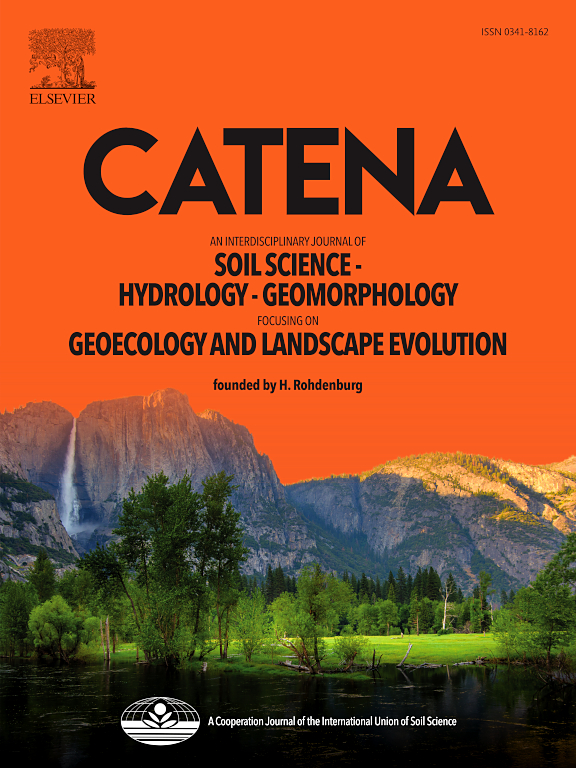Terracing stabilizes and enhances soil organic carbon sequestration benefits of revegetation on the Loess Plateau, China
IF 5.4
1区 农林科学
Q1 GEOSCIENCES, MULTIDISCIPLINARY
引用次数: 0
Abstract
Revegetation is vital for enhancing carbon sequestration. However, the impacts of revegetation and terracing measures on soil organic carbon (SOC) content and SOC sequestration (SOCS), and the differences in the effects of revegetation measures on SOC and SOCS between sloped and terraced fields remain unclear. We conducted a field survey of cropland (CL), grassland (GL), and forestland (FL) in both sloped and terraced fields in Wuqi county, on China’s Loess Plateau. Revegetation in sloped fields significantly increased the SOC content at 0–10 cm depth (GL: p = 0.04; FL: p < 0.01). However, revegetation in terraced fields enhanced the SOC content at 0–100 cm (GL at 40–80 cm: p < 0.05; FL: p < 0.01). Terracing measures increased the SOC content, particularly in the subsoil, with the impact varying by land-use types. For FL, terracing significantly increased (p < 0.01) the SOC content in 20–40 cm, 40–60 cm, 60–80 cm and 80–100 cm by 38.2 %, 53.5 %, 41.1 % and 44.7 %, respectively. For GL, terracing significantly enhanced (p < 0.01) the SOC content at 40–60 cm and 60–80 cm by 32.0 % and 39.7 %, respectively. For CL, terracing did not significantly increase the SOC content. In sloped fields, revegetation reduced deep soil moisture and clay content, decreased subsoil SOC content, and led to an initial increase followed by a decrease in SOCS with depth. In terraced fields, revegetation enhanced SOC content and offset the negative effects on soil moisture and clay content, resulting in increased SOCS with depth. Revegetation primarily enhanced the SOCS at 0–40 cm, and terracing measures stabilized the SOCS in the 0–40 cm layers and further enhanced it in the 40–100 cm layers. In the context of soil erosion control and ecological restoration, implementing vegetation restoration with engineering measures can effectively stabilize and enhance the SOCS, fully leveraging the role of soil in mitigating climate change.
求助全文
约1分钟内获得全文
求助全文
来源期刊

Catena
环境科学-地球科学综合
CiteScore
10.50
自引率
9.70%
发文量
816
审稿时长
54 days
期刊介绍:
Catena publishes papers describing original field and laboratory investigations and reviews on geoecology and landscape evolution with emphasis on interdisciplinary aspects of soil science, hydrology and geomorphology. It aims to disseminate new knowledge and foster better understanding of the physical environment, of evolutionary sequences that have resulted in past and current landscapes, and of the natural processes that are likely to determine the fate of our terrestrial environment.
Papers within any one of the above topics are welcome provided they are of sufficiently wide interest and relevance.
 求助内容:
求助内容: 应助结果提醒方式:
应助结果提醒方式:


